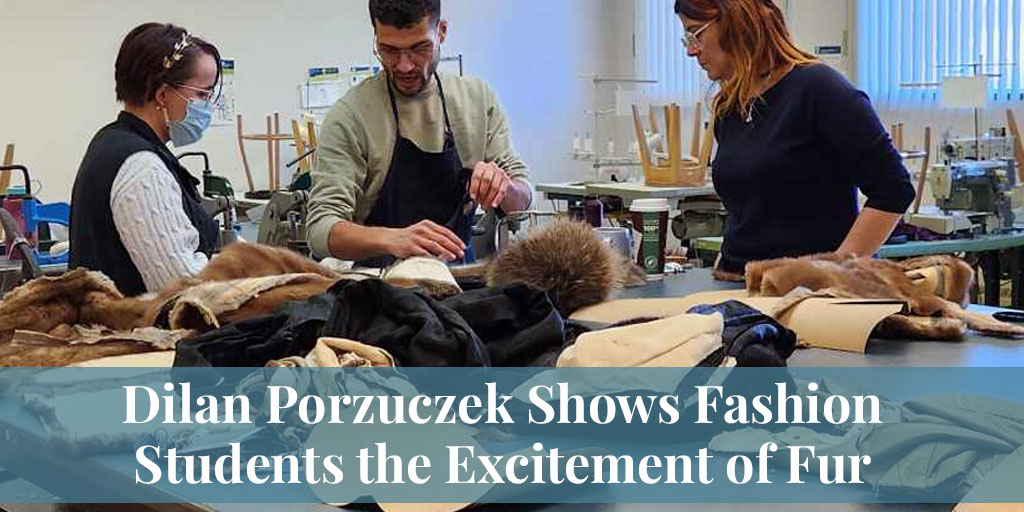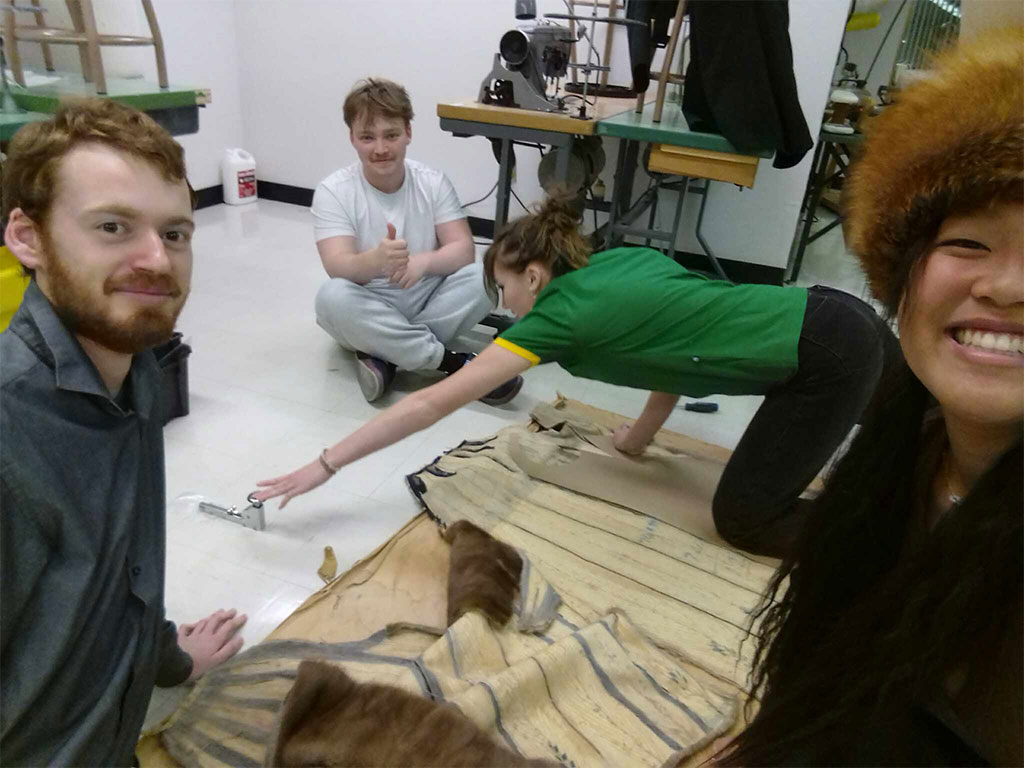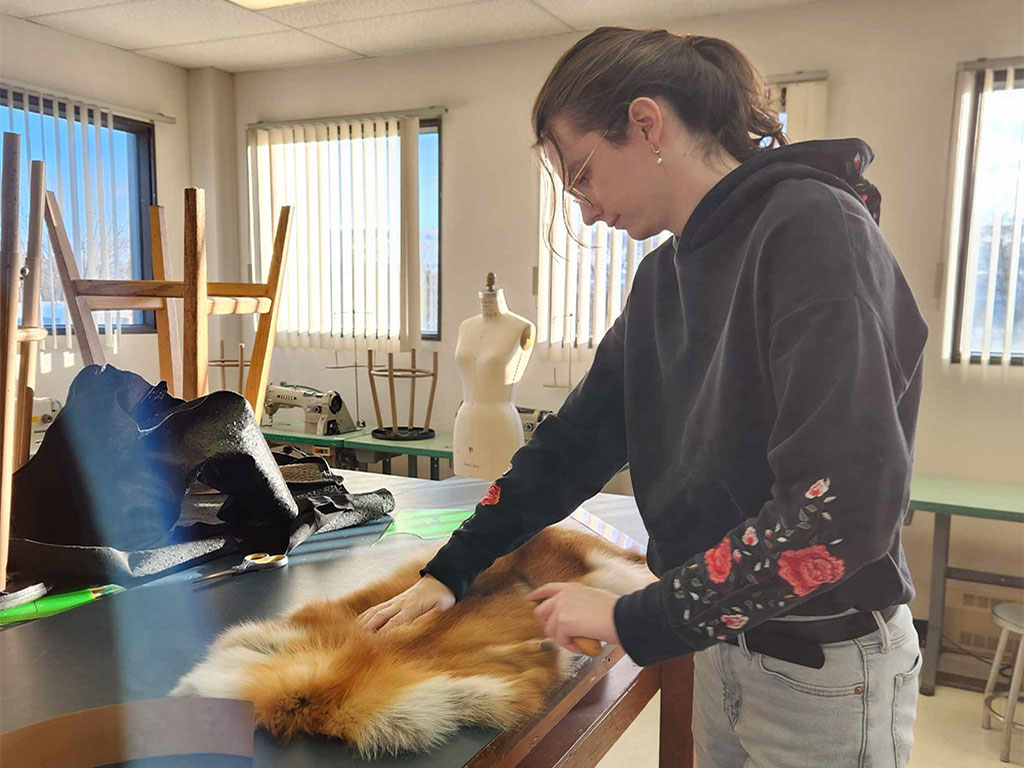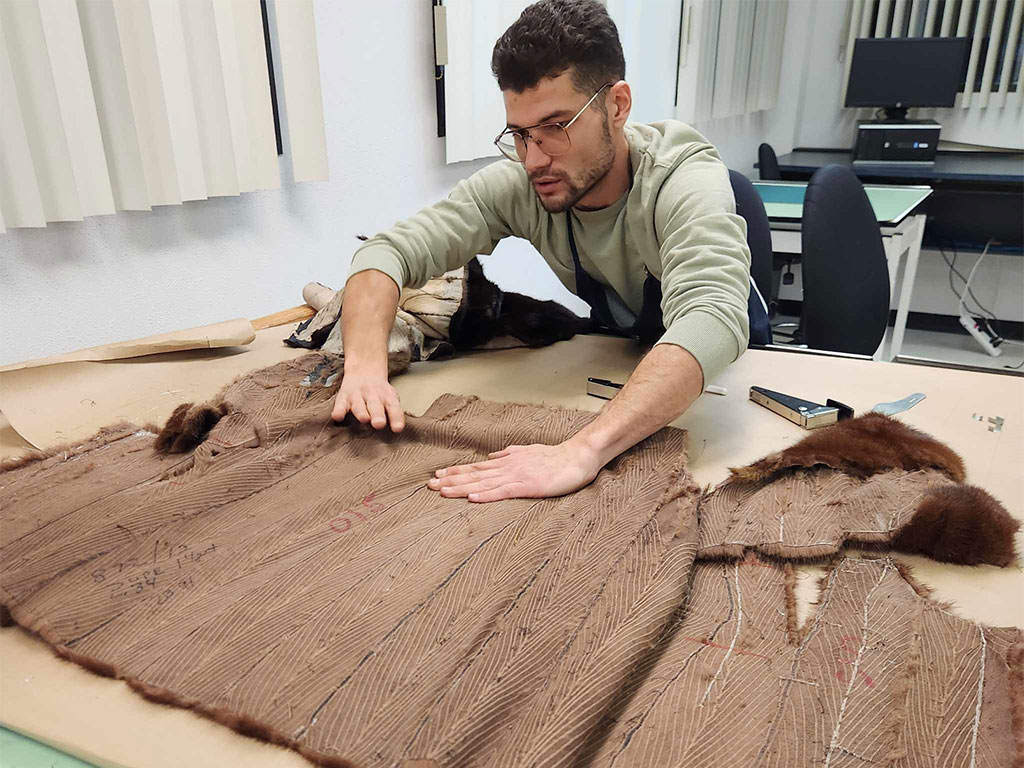
Dilan Porzuczek has a passion for fur — a passion he’s now sharing with a new generation of talented young designers.
“I was first invited to do a presentation for the fashion program at Quebec City’s College Notre-Dame-de-Foy several years ago,” says the 28-year-old owner of Fourrures Léopold Martel, a well-established fur store in Jonquiere, about 200 kilometres north of the provincial capital.
“The students could relate to me because I am young, and coming from a retail fashion background I understood their creative interests.

“It is important that we go into fashion schools because the teachers often aren’t comfortable introducing fur in their classes; they don’t have the information they need to reassure students about their ethical concerns,” says Dilan.
SEE ALSO: The ethics of fur. Truth About Fur.
“Many of the students were anti-fur to start, but they listened when I explained how I had become uncomfortable with the ecological cost of ‘fast fashion’. The younger generation is very conscious and concerned about waste in the fashion industry.
SEE ALSO: What is “vegan fashion” and how true is the hype? Truth About Fur.

“They were really interested to learn about the environmental credentials of fur – that fur is responsibly-produced, natural, long-lasting and recyclable. And that after decades of use you can throw fur into the garden compost. Unlike fake fur or other petroleum-based synthetics that make up 60% of our clothing today, fur is fully biodegradable, it quickly returns to the earth. If we are looking for sustainable clothing, fur checks all the boxes!
SEE ALSO: The sustainability of fur. Truth About Fur.
“At the last seminar we did, in November, I was told that seven teachers but only five students had signed up for the two-day workshop that followed,” says Dilan. “But after my presentation, 30 showed up, so I guess we changed a few minds!
“We had set up blocking boards, and fur machines, and the Fédération des Trappeurs Gestionnaires du Québec donated some coyotes, fox, beaver and other furs. [Ed.: A “fur machine”, as it is known in the trade, is a fur sewing machine to the layman.] We also had some old coats to recycle.
SEE ALSO: 5 great ways to recycle old fur clothing. Truth About Fur.

“Gathered around a big table, I started by explaining how we use the different furrier’s tools. Then I had them work on their patterns, and that afternoon they were blocking skins and learning how to use a fur machine.
“The second day they were all working on their projects, cutting and sewing fur pelts. Some of the teachers even wanted to learn how to ‘let out’ pelts!

“They didn’t all manage to finish their pieces that weekend, but we followed up with Facebook. Some made accessories, or a small vest, even a bomber jacket … My only requirement was that they make something different.
“That’s what’s so wonderful about fur – you can really get creative,” says Dilan. “I just love working with fur, and it’s very satisfying when you see young designers catching that excitement!”











Dilan is a great asset to the furrier/fur artisan group in Canada. This was a great event that was clearly enjoyed by many fashion students. This article prompted me to offer to speak to our very small fashion school in Saskatoon again. I haven’t done this for several years, and am by no means young, but…….